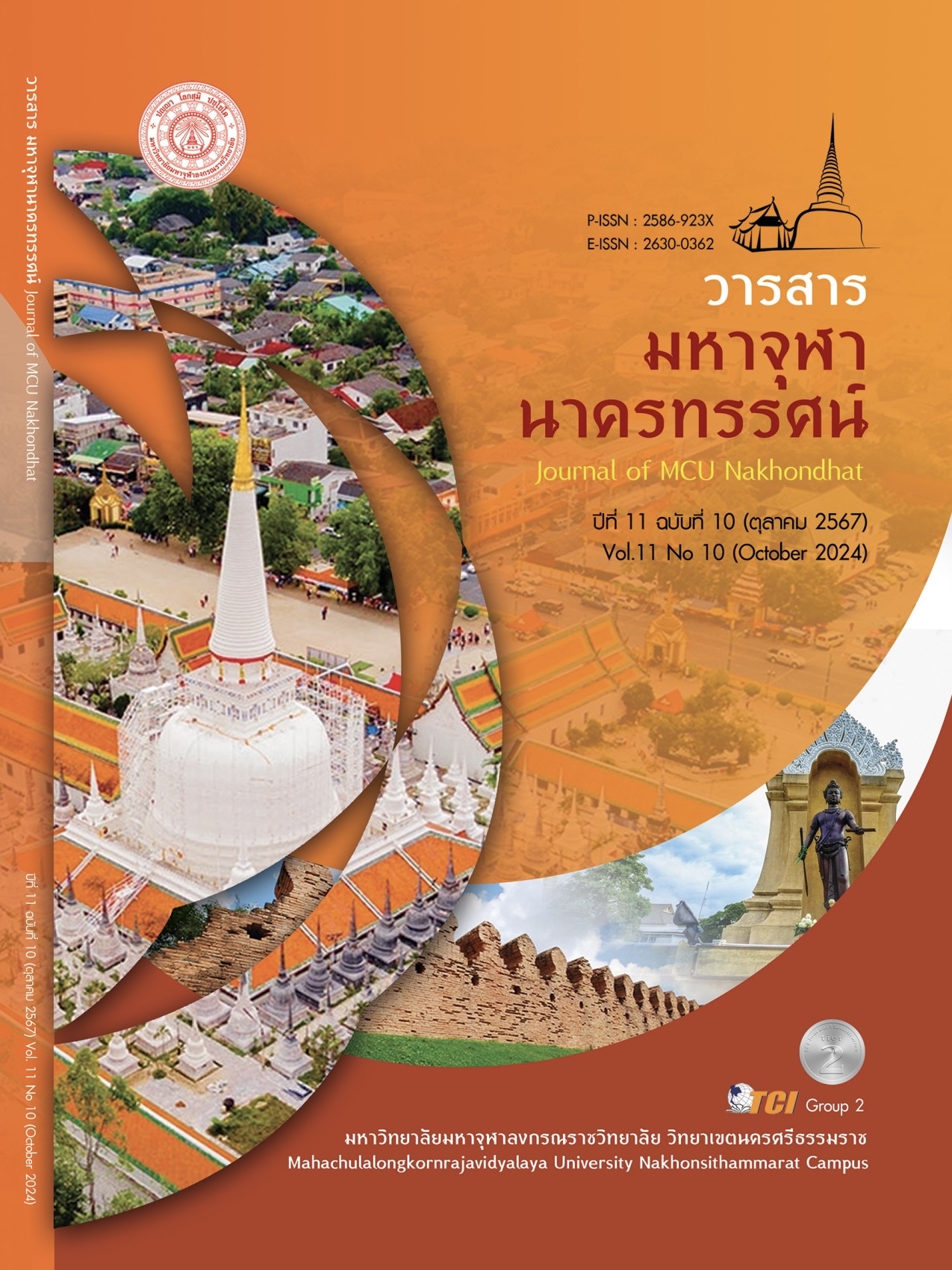GUIDELINES FOR IMPROVING ORGANIZATIONAL CLIMATE MANAGEMENT OF UNIVERSITIES IN GUANGXI
Main Article Content
Abstract
This purpose of this research was to the study of current situation of organizational climate management of universities in Guangxi with Mixed Method Research The population used in the research was 368 executives, selected by purposive sampling from 16 universities in 3 types of universities (11 public universities, 3 private universities, and 2 vocational colleges) in Guangxi. The research instruments were questionnaires with a reliability of 0.96, structured interviews, and evaluation forms. Data were analyzed using percentages, means, standard deviations, and content analysis. There were 44 approaches to organizational climate management of universities in Guangxi. The results of the research showed that 1) The context of organizational climate management of universities in Guangxi was at a moderate level. 2) The approaches to organizational climate management of universities in Guangxi consisted of 7 aspects: Interpersonal relationships, supportive atmosphere, fair atmosphere, management style, hierarchical system, Organization Innovation Management System 3) The evaluation results of the appropriateness and feasibility of the appropriateness and feasibility of the practices were at the highest level. The management to enhance the organization's atmosphere is effective in managing the work to achieve the most important objectives, which is the efficient management of personnel, focusing on physical factors and psychological factors, which are important for developing work to be in line with the objectives and covering the indicators of excellent organizational management. Everyone participates in expressing constructive opinions, supporting personnel in seeking knowledge, and using modern technology to improve the quality of the university with outstanding efficiency.
Article Details

This work is licensed under a Creative Commons Attribution-NonCommercial-NoDerivatives 4.0 International License.
References
Aboudahr, S. (2022). The relationship between strategic leadership, organizational climate and quality management practices in egypt public universities. International Journal of Economics and Finance, 4(3), 12-21.
Anderson, L. & Hoy, T. (2003). The Search for school climate: A review of the literature. Journal of Review of Educational Research, 52(3), 368-420.
Bao, P. et al. (2020). Chinese university library organizational climate type and baseline research. Journal of Books and intelligence work, 12(5), 71-77.
Chen, M. (2022). In the new period, universities organize the management of the internal involved in the management of the management of the management and the resolution of countermeasures. Journal of the office business, 31(23), 80-83.
Collins, S. et al. (2006). School climate and student outcomes. Journal of CrossDisciplinary Perspectives in Education, 3(1), 34-39.
Duan, J. et al. (2014). organizational climate research: concept measurement, theoretical foundation and evaluation prospects. Journal of Psychological progress, 9(12), 64-74.
Halpin, A.W. (1966). The organizational climate of schools University of Chicago. Journal of Midwest Administration, 13(2), 224-228.
Kopelman, B. & Guzzo, S. (1990). Organizational climate and culture. Journal of role of climate and culture in productivity, 6(4), 282-318.
Likert, R. (1961). New Pattern of Management. New York: McGraw-Hill.
Sheng, B. (2003). Governance of higher education: Reconstruction of the relationship between the government, universities, and society. Journal of Higher Education Research, 17(2), 47-51.
Stock, R. M. et al. (2014). A closer look at cross‐functional R&D cooperation for innovativeness: Innovation‐oriented leadership and human resource practices as driving forces. Journal of product innovation management, 31(5), 924-938.


